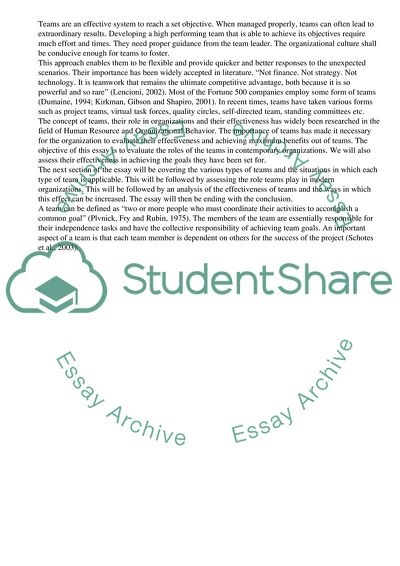Cite this document
(Teams in Contemporary Organizations Essay Example | Topics and Well Written Essays - 2500 words - 1, n.d.)
Teams in Contemporary Organizations Essay Example | Topics and Well Written Essays - 2500 words - 1. Retrieved from https://studentshare.org/business/1744024-teams-are-seen-as-a-necessary-condition-in-contemporary-organisations-but-are-they-effective
Teams in Contemporary Organizations Essay Example | Topics and Well Written Essays - 2500 words - 1. Retrieved from https://studentshare.org/business/1744024-teams-are-seen-as-a-necessary-condition-in-contemporary-organisations-but-are-they-effective
(Teams in Contemporary Organizations Essay Example | Topics and Well Written Essays - 2500 Words - 1)
Teams in Contemporary Organizations Essay Example | Topics and Well Written Essays - 2500 Words - 1. https://studentshare.org/business/1744024-teams-are-seen-as-a-necessary-condition-in-contemporary-organisations-but-are-they-effective.
Teams in Contemporary Organizations Essay Example | Topics and Well Written Essays - 2500 Words - 1. https://studentshare.org/business/1744024-teams-are-seen-as-a-necessary-condition-in-contemporary-organisations-but-are-they-effective.
“Teams in Contemporary Organizations Essay Example | Topics and Well Written Essays - 2500 Words - 1”, n.d. https://studentshare.org/business/1744024-teams-are-seen-as-a-necessary-condition-in-contemporary-organisations-but-are-they-effective.


